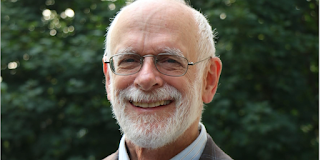
Fort York has guarded the Toronto shoreline since 1793, but landfill and development have steadily moved the shoreline away from it. In the twentieth century it stood surrounded by light industry and transit corridors that include an elevated freeway. All through the 20th century, groups of historically-minded Torontonians protected it from development threats. It has been a national historic site since 1923.
By the end of the century, with rising property values and more intense planning projects throughout central Toronto, a strictly negative idea of merely holding back development to "save the fort" seemed mostly to emphasize the potential risk to it.
Around that time, heritage activists and planners began a different initiative: not so much resisting development as demonstrating how Fort York could be an asset to a reshaped waterfront and a re-imagined Toronto. They pitched the idea that Fort York and Garrison Common around it were a key cultural landmark in the city, as well as the largest green space in the densely used area just west of downtown. They laid out plans for how, as the area around it was transformed for industrial and commercial uses to high-density residential development, the Fort and its environs should become the heart of the new neighbourhood, offering community gathering space, pedestrian and bike corridors, recreational space, and cultural value.
Most of this has actually come to pass. Thousands of apartment and condo-dwellers now live in "the Fort York district," the site's much lauded new visitor centre provides community space, and the green space, newly made accessible with pathways and bridges, has become the community back yard, even as the fort's programming, particularly for the garrison common, has become open to music events, food fairs, indigenous powwows, and other crowd-friendly events. Preserving Fort York has become an asset not an obstacle to the blossoming of the new neighbourhood around it.
Much of the credit for this goes to Stephen Otto. Stephen was an Ontario heritage department official, a major scholar of early Toronto and Upper Canada with deep Ontario roots. He was private, polite, and reserved, but at the same time a formidable activist for creative integration of heritage and urban planning, and a remarkable organizer of talent, energy and money around historical and heritage causes -- Fort York perhaps central among them. "Stephen is a fine fellow, but very hard to say no to," summed him up very nicely.
Stephen was inducted into the Order of Canada in January in a special ceremony in Toronto, when he was already in palliative care. He died on April 22, and there is a memorial service at old Toronto's school, Trinity College, on Saturday.
Who will I go to for little points in Ontario history no one else has at their fingertips?
Image: Fife and Drum. Friends of Fort York









